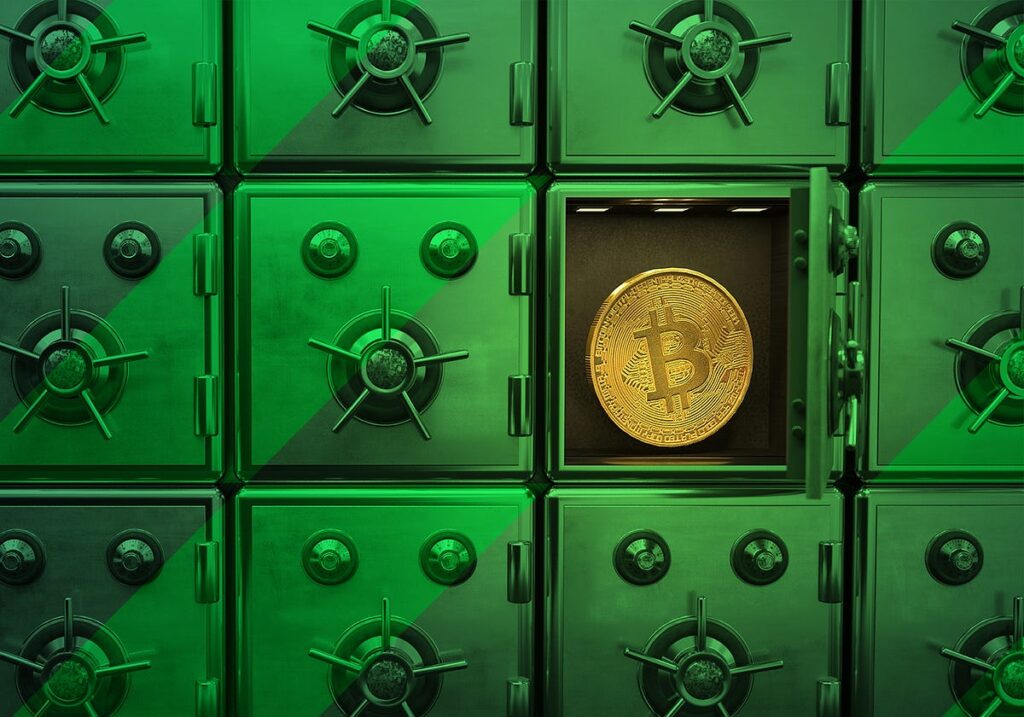
Introduction
Cryptocurrency ownership comes with great responsibility—if you lose access to your funds, there’s no bank to help recover them. That’s why properly storing and securing your crypto is essential. In this guide, we’ll cover different storage methods, security best practices, and how to protect yourself from hacks and scams.
1. Understanding Crypto Wallets
Cryptocurrencies are stored in wallets, which come in two main types:
A. Hot Wallets (Online Storage)
Hot wallets are connected to the internet, making them more convenient but also more vulnerable to hacks.
Examples of Hot Wallets:
- Web wallets (MetaMask, Trust Wallet)
- Desktop wallets (Exodus, Electrum)
- Mobile wallets (Coinbase Wallet, Mycelium)
Pros:
✅ Easy to use and access
✅ Ideal for frequent transactions
✅ Often free to use
Cons:
❌ Vulnerable to hacking and phishing attacks
❌ If the platform gets compromised, funds can be lost
B. Cold Wallets (Offline Storage)
Cold wallets are offline and offer better security against hacks.
Examples of Cold Wallets:
- Hardware wallets (Ledger Nano X, Trezor)
- Paper wallets (A physical printout of your private key)
Pros:
✅ Highly secure against online threats
✅ Ideal for long-term holding (HODLing)
Cons:
❌ Can be lost or damaged (unless properly backed up)
❌ Less convenient for frequent transactions
2. How to Keep Your Crypto Secure
A. Use Strong Passwords and Enable 2FA
A weak password can be easily guessed, putting your funds at risk. Follow these guidelines:
🔹 Use at least 12-16 characters, including uppercase, lowercase, numbers, and symbols.
🔹 Never reuse passwords across different accounts.
🔹 Enable two-factor authentication (2FA) using Google Authenticator or Authy.
B. Beware of Phishing Scams
Scammers often impersonate exchanges, wallet providers, or influencers to steal private keys. Stay cautious by:
🚨 Never clicking suspicious links in emails or messages.
🚨 Double-checking URLs before entering login details.
🚨 Not sharing your private key or seed phrase with anyone.
C. Keep Your Private Keys and Seed Phrases Safe
Your private key or recovery seed phrase (12-24 words) is the only way to access your wallet. If lost, your funds are gone forever.
Best practices:
✔️ Write it down on paper and store it securely.
✔️ Use metal backup solutions for added protection.
✔️ Never store it on cloud services, emails, or digital notes.
3. Storing Crypto on Exchanges: Good or Bad?
Many people keep their crypto on centralized exchanges like Binance or Coinbase for convenience. However, exchanges control your private keys, meaning:
Pros:
✅ Easy access and trading
✅ Insurance (some exchanges offer protection against hacks)
Cons:
❌ If the exchange is hacked, you could lose funds
❌ Exchange policies can freeze or restrict access to your crypto
👉 Best practice: Use exchanges for trading but move your assets to a private wallet for long-term holding.
4. Advanced Security Measures
For those holding significant crypto investments, consider these extra precautions:
A. Multi-Signature Wallets
🔹 Require multiple approvals before transactions can be executed (e.g., 2 out of 3 keys must sign).
🔹 Useful for businesses or group holdings.
B. Air-Gapped Wallets
🔹 Fully offline wallets that never connect to the internet.
🔹 Extreme security for large holdings.
C. Using a VPN for Transactions
🔹 Encrypts internet traffic, preventing surveillance and hacking attempts.
🔹 Recommended when using public Wi-Fi.
5. What to Do If Your Crypto Is Stolen or Lost?
If your funds are compromised:
❌ If on an exchange: Immediately contact customer support and enable account restrictions.
❌ If through phishing/hack: Report to authorities and blockchain tracking services.
❌ If private key is lost: Unfortunately, recovery is not possible.
Final Thoughts
Security is the most important aspect of crypto ownership. By following these best practices—using cold storage, enabling 2FA, protecting your private keys, and staying vigilant against scams—you can significantly reduce the risk of losing your funds.




